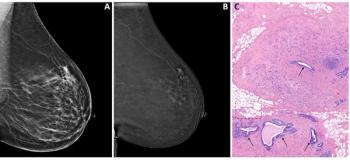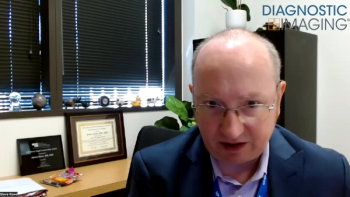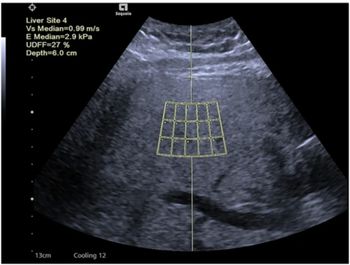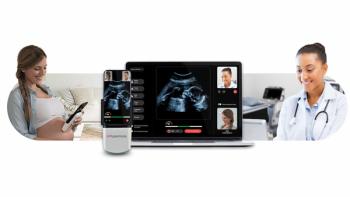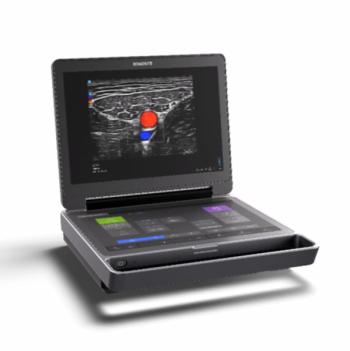
VENDOR PROFILE: Merge Technologies
Merge moves beyond OEM focus to expand recognition among end usersTraditional OEM firm provides technology to ease move into PACSMerge Technologies has been a mainstay in the PACS market. Beginning in the late 1980s as a supplier of DICOM
Merge moves beyond OEM focus to expand recognition among end usersTraditional OEM firm provides technology to ease move into PACS
Merge Technologies has been a mainstay in the PACS market. Beginning in the late 1980s as a supplier of DICOM connectivity units to OEMs, Merge products have been installed at well over 2000 healthcare facilities worldwide.
Despite substantial market penetration of its offerings, many healthcare institutions have limited knowledge of the firm because its products are usually privately-labeled by OEM vendors. Lately, Merge has sought to raise its profile among end users and has achieved a measure of success with that approach, with over 200 sites purchasing Merge technology.
As part of a push to directly serve this audience, Merge has developed a line of networked image management products designed to help end users make the leap into the world of PACS, while leveraging the firm's extensive experience in DICOM. MergeARK, the first product in this family, is a scalable archive employing RAID and CD-R storage media. Released in July (PNN 8/98), MergeARK can meet storage needs ranging from entry-level systems providing short-term online storage space up to larger scale storage situations. About 12 sites employ MergeARK, according to the company.
CaseWorks, another product in this family, is a device that allows users to gain the benefits of PACS technology while continuing to read images from conventional film generated from a Merge DICOM print network. CaseWorks enables digital image archiving of data generated by the print network, and it allows radiologists to designate which images in the films should be included in the final report for referring physicians. Radiologists designate the films using a dictation device and a bar code reader.
CaseWorks has completed beta testing at John Muir Medical Center in Walnut Creek, CA, and will be available in the latter part of this quarter, according to the Milwaukee-based company.
DICOM proponent
Founded in November 1987 to integrate imaging devices from different vendors into a networked environment, Merge's first product was MergeBox (now called MergeMVP), an ACR-NEMA standard converter that provided a means for noncompliant image acquisition devices to connect to a standard-based network, as well as to other proprietary image networks and devices.
That release was followed by MergeCOM, a toolkit that allowed vendors to retrofit legacy modalities with ACR-NEMA's version 2.0, the predecessor of DICOM 3.0. Merge company officials played a key role in the development of DICOM, and they chair several DICOM working groups.
"From the beginning, we decided to get behind the standards effort in a big way," said William Mortimore, president. "Key leaders of the DICOM movement are with this company."
Merge continued to serve as a supplier of DICOM connectivity and toolkits into the early 1990s, and in 1994, the firm decided to begin developing technology for end users. At the 1995 RSNA meeting, Merge introduced MergeAPS, a multimodality laser film manager with a digital archiving option. The company also provides MergeDPI, a digital printer interface, and MergeVPI, a video print interface.
Direct sales efforts are handled through dealers and VARs, although company officials play a key role in directing those efforts.
Merge is also active around the globe. The firm opened a European office in the Netherlands in 1994, handling sales and service for the European region. The company has also opened a Japanese branch, staffed by one sales person. An office will be established there later this year, and head count will be expanded, Mortimore said.
Merge went public in January 1998 with an initial public offering of 1.9 million shares. The company's shares began trading on the NASDAQ SmallCap Market at $6 a share. As reflected in its current stock price of around a $1 per share, 1998 was a challenging year financially for the company. The fourth quarter was particularly disappointing to company officials, with both OEM/VAR and end-user sales coming in below expectations. For the fourth quarter (end-December), revenues were expected to be between $2 and $2.3 million, compared with revenue of $2.9 million in the same period last year. Revenues for the year were anticipated between $9.4 million and $9.7 million, compared with $9.7 million in 1997.
While Merge has made progress in increasing end-user awareness of its products, it is taking longer than expected to translate this progress into sales. Delay of several contracts anticipated in the fourth quarter led to a slight dip in end-user channel sales compared with the fourth quarter in 1997.
One deal that may help Merge's OEM efforts is a January contract with GE Medical Systems. The Milwaukee-based vendor, one of the last major modality manufacturers not to use Merge's DICOM software, has signed an annual master license agreement for MergeCOM-3 (PNN 2/99). Merge now has over 170 license agreements with medical imaging OEM manufacturers.
Merge also continues to offer its MergeLink consulting service. Approximately 1500 vendor representatives have attended its DICOM training classes. The unit also provides consulting for hospitals contemplating a PACS purchase.
The company has also renewed its distributor deal with Fuji Medical Systems U.S.A. of Stamford, CT. Merge counts ADAC Healthcare Information Systems in Houston, Konica Medical Imaging in Wayne, NJ, and GE among its distributors.
As part of its efforts to educate end users about PACS, DICOM, and its own product line, Merge has launched Connect '99, a learning and planning seminar series for CEOs, CIOs, and radiology administrators. The first seminars were held in the San Francisco Bay Area and the Boston metropolitan area, and future meetings this year are scheduled in Los Angeles, Chicago, Phoenix, Atlanta, Milwaukee, and Houston.
New products
Technology in the company's pipeline may also help Merge's cause. MergePort, a HL-7 and DICOM interface, will be available this quarter. At last year's RSNA meeting, Merge featured CaseWorks Remote, a soft-copy reading version of CaseWorks that allows users to make diagnoses and complete reports and dictation from home. Availability is expected by mid-year (PNN 1/99).
ReportWorks, a secure, Web-based distribution approach for images and reports, is expected to go into beta testing by this year's RSNA show. The company is also developing TechWorks, a Web-based quality control station and add-on to the firm's MergeBox. With TechWorks, technologists can enter notes from the exam right from a console at the modality scanner. TechWorks is targeted for a fourth-quarter release, Mortimore said.
Merge is also investigating applications for its technology in nonradiology imaging departments such as endoscopy, Mortimore said.
The company isn't neglecting its traditional connectivity side of the business, however. Merge continues to invest in its OEM offerings and is working on a DICOM component analyzer and several other toolkit offerings. The efforts appear to be paying off. Merge is encouraged with its results so far in 1999, Mortimore said.
Future prospects
As one of the last PACS companies with its original identity left from the 1980s, Merge's staying power reflects the value and importance DICOM has had in the PACS marketplace. Although its end-user sales efforts have underperformed to date, those results reflect the challenges all small companies face in this sector. A long history in the market and a solid OEM business may provide Merge with the edge it needs to increase these channel sales, however.
Merge Technologies
1126 S. 70th Street
Milwaukee, WI 53214-3151
414/475-4300
fax: 414/475-3940
Key personnel
Bill Mortimore, president
David Noshay, vice president, end-user sales and marketing
Bill Stafford, vice president, OEM/VAR sales and marketing
Michael Franco, chief technical officer
Don Van Syckle, director, MergeLink Professional Services
Colleen Doan, chief financial officer
Anton van Kimmenade, director of worldwide service
Stock trading
NASDAQ Stock Exchange as MRGE
52-week NASDAQ high: $6.63
52-week NASDAQ low: $0.81
As of 2/18: $1.06
Product lines
- MergeWorks DICOM modality interfaces
- MergeCOM-3 DICOM software toolkits
- Mach image capture and print interface hardware
- CaseWorks image management device
- MergeARK archive
Product distribution
OEM, VAR, distributor, and direct sales
Key installations
John Muir Medical Center in Walnut Creek, CA; Martin Memorial Hospitals in Stuart, FL; University of Rotterdam in Rotterdam, The Netherlands; and Jersey Shore Medical Center in Neptune, NJ
OEM partners
Nearly all major imaging modality vendors
Long-term strategy
Merge began its corporate life as a provider of connectivity products to OEMs. While continuing to emphasize those products and services, the company began in 1996 to expand its end-user and VAR sales activities, developing product lines and increasing marketing efforts for that audience. End-user and distributor sales now represent 45% of the company's revenues, and Merge expects that contribution to grow to over 50% in 1999.
Search again Homepage
Newsletter
Stay at the forefront of radiology with the Diagnostic Imaging newsletter, delivering the latest news, clinical insights, and imaging advancements for today’s radiologists.

